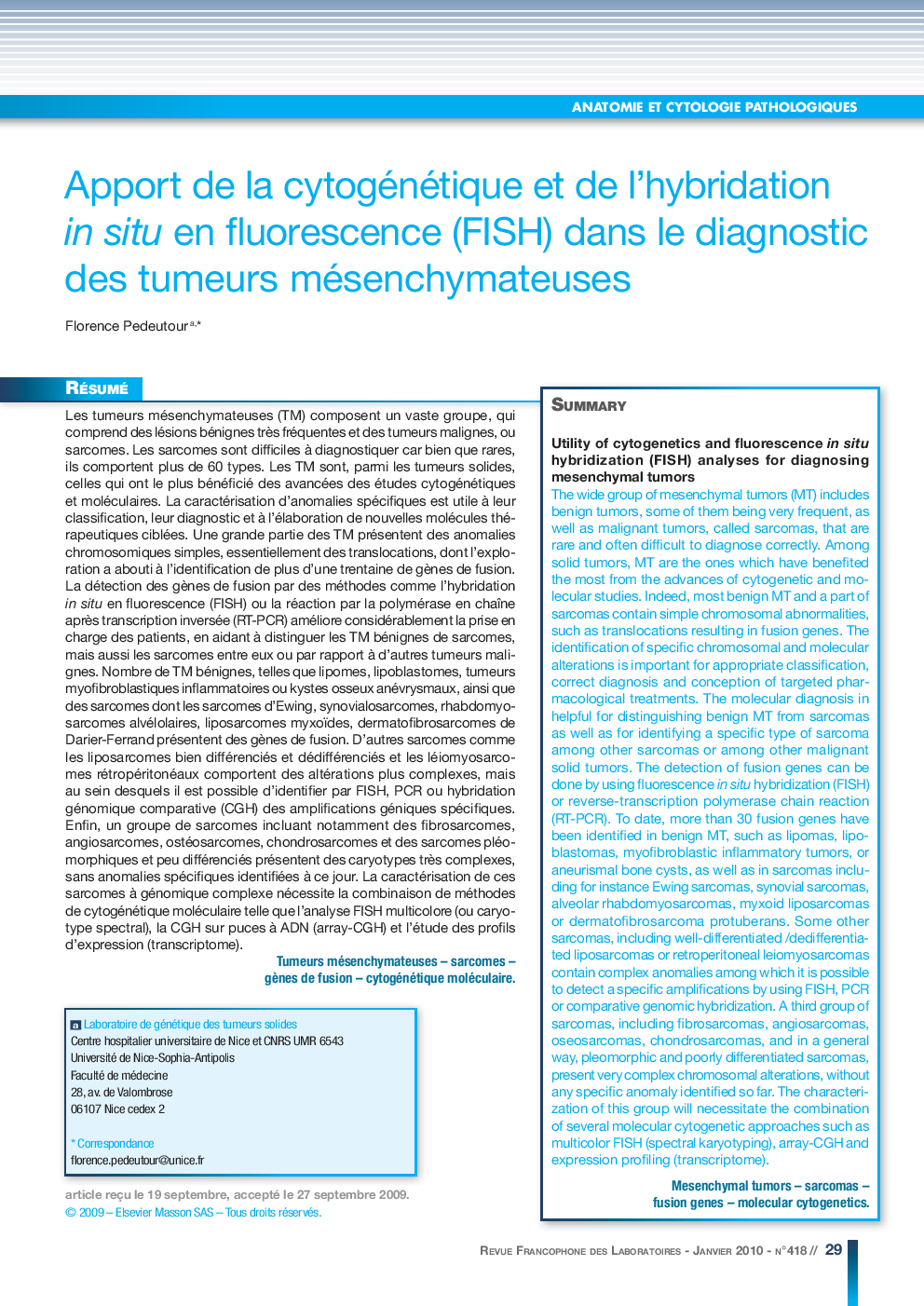| کد مقاله | کد نشریه | سال انتشار | مقاله انگلیسی | نسخه تمام متن |
|---|---|---|---|---|
| 7659044 | 1495107 | 2010 | 14 صفحه PDF | دانلود رایگان |
عنوان انگلیسی مقاله ISI
Apport de la cytogénétique et de l'hybridation in situ en fluorescence (FISH) dans le diagnostic des tumeurs mésenchymateuses
دانلود مقاله + سفارش ترجمه
دانلود مقاله ISI انگلیسی
رایگان برای ایرانیان
کلمات کلیدی
موضوعات مرتبط
مهندسی و علوم پایه
شیمی
شیمی آنالیزی یا شیمی تجزیه
پیش نمایش صفحه اول مقاله

چکیده انگلیسی
The wide group of mesenchymal tumors (MT) includes benign tumors, some of them being very frequent, as well as malignant tumors, called sarcomas, that are rare and often difficult to diagnose correctly. Among solid tumors, MT are the ones which have benefited the most from the advances of cytogenetic and molecular studies. Indeed, most benign MT and a part of sarcomas contain simple chromosomal abnormalities, such as translocations resulting in fusion genes. The identification of specific chromosomal and molecular alterations is important for appropriate classification, correct diagnosis and conception of targeted pharmacological treatments. The molecular diagnosis in helpful for distinguishing benign MT from sarcomas as well as for identifying a specific type of sarcoma among other sarcomas or among other malignant solid tumors. The detection of fusion genes can be done by using fluorescence in situ hybridization (FISH) or reverse-transcription polymerase chain reaction (RT-PCR). To date, more than 30 fusion genes have been identified in benign MT, such as lipomas, lipoblastomas, myofibroblastic inflammatory tumors, or aneurismal bone cysts, as well as in sarcomas including for instance Ewing sarcomas, synovial sarcomas, alveolar rhabdomyosarcomas, myxoid liposarcomas or dermatofibrosarcoma protuberans. Some other sarcomas, including well-differentiated/dedifferentiated liposarcomas or retroperitoneal leiomyosarcomas contain complex anomalies among which it is possible to detect a specific amplifications by using FISH, PCR or comparative genomic hybridization. A third group of sarcomas, including fibrosarcomas, angiosarcomas, oseosarcomas, chondrosarcomas, and in a general way, pleomorphic and poorly differentiated sarcomas, present very complex chromosomal alterations, without any specific anomaly identified so far. The characterization of this group will necessitate the combination of several molecular cytogenetic approaches such as multicolor FISH (spectral karyotyping), array-CGH and expression profiling (transcriptome).
ناشر
Database: Elsevier - ScienceDirect (ساینس دایرکت)
Journal: Revue Francophone des Laboratoires - Volume 2010, Issue 418, January 2010, Pages 29-42
Journal: Revue Francophone des Laboratoires - Volume 2010, Issue 418, January 2010, Pages 29-42
نویسندگان
Florence Pedeutour,